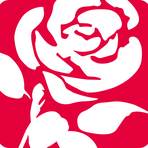Navigating the Trade Winds: The UK-India Deal and Domestic Challenges
June 19, 2025, 10:18 pm
The UK-India trade deal is a ship sailing into uncharted waters. As the UK government pushes to finalize this landmark free trade agreement (FTA), the winds of political opposition blow fiercely. Business and Trade Secretary Jonathan Reynolds stands at the helm, advocating for a deal that promises to reshape economic ties between the two nations. But beneath the surface, a tempest brews within the Conservative Party, fueled by concerns over labor mobility and taxation.
The FTA, concluded in principle on May 6, 2025, is touted as India’s most comprehensive trade agreement to date. It is expected to inject £4.8 billion into the UK’s GDP and double bilateral trade to £120 billion by 2030. This is not just a trade deal; it’s a lifeline for a post-Brexit Britain seeking to redefine its global relationships. Yet, as Reynolds navigates these waters, he faces fierce criticism from within his own party.
At the India Global Forum on June 18, Reynolds reaffirmed the government’s commitment to the deal. He emphasized the need for momentum and political will from both sides. The stakes are high. The UK-India trade relationship has already grown to $21.34 billion in 2023-24. The potential for growth is immense, but so are the risks.
The controversy centers on provisions regarding labor mobility. A clause exempting certain Indian workers from paying National Insurance contributions has ignited a firestorm of criticism. Opponents argue this creates a “two-tier tax system” that undermines British workers. Critics, including former trade secretary Kemi Badenoch, have voiced strong opposition, claiming the deal could undercut local labor.
Reynolds counters these claims, insisting that the exemption aligns with international norms and is reciprocal. It applies only to specific skilled workers and includes visa caps. The goal is to facilitate business operations, not to disadvantage British workers. However, the political backlash illustrates the delicate balancing act the government must perform.
As Reynolds pushes forward, he must navigate not only the complexities of international trade but also the turbulent waters of domestic politics. The Conservative Party is divided, and the opposition is ready to pounce. The Labour Party, meanwhile, is facing its own challenges. Critics argue that their economic policies risk locking Britain into a high-tax, low-growth cycle.
Labour’s approach has been characterized by increased borrowing and spending, with a staggering £200 billion more expected over the current parliament. This has led to rising taxes and inflation, while growth stagnates. The party’s instinct to tax more and centralize power has drawn sharp criticism. The Institute for Fiscal Studies has accused Labour of muddling figures to obscure the grim economic reality.
The Conservative response is to advocate for a pro-growth agenda. They argue for tax reforms that reward entrepreneurship and innovation. The focus is on supporting small businesses and reversing policies that could stifle growth. The call for reform extends to public services, particularly the NHS, which is seen as underperforming. Critics argue that Labour’s spending increases lack the necessary reforms to ensure sustainability.
National resilience is another critical area of concern. The past few years have exposed vulnerabilities in Britain’s critical systems, from energy security to defense capabilities. The world is becoming increasingly dangerous, and the need for strategic investment in resilience is paramount. Yet, Labour’s approach has been criticized for delaying essential decisions on energy and defense.
As the UK government works to finalize the UK-India trade deal, it must also contend with these domestic challenges. The outcome of the trade negotiations will not only impact economic ties with one of the world’s fastest-growing markets but also serve as a litmus test for the government’s ability to navigate trade in a post-Brexit landscape.
The stakes are high. The UK-India FTA represents a significant opportunity for economic growth and international collaboration. However, the political landscape is fraught with challenges. The government must address the concerns of its own party while also presenting a united front to the world.
In the end, the success of the UK-India trade deal will depend on the government’s ability to balance these competing interests. It’s a tightrope walk, with potential rewards on one side and political peril on the other. As Reynolds champions the deal, he must also reassure critics that British workers will not be left behind.
The journey ahead is uncertain. The winds of change are blowing, and the UK must navigate carefully. The UK-India trade deal could be a beacon of hope in a turbulent economic landscape, but only if the government can steer through the storm. The future of Britain’s trade relationships hangs in the balance, and the world is watching.
The FTA, concluded in principle on May 6, 2025, is touted as India’s most comprehensive trade agreement to date. It is expected to inject £4.8 billion into the UK’s GDP and double bilateral trade to £120 billion by 2030. This is not just a trade deal; it’s a lifeline for a post-Brexit Britain seeking to redefine its global relationships. Yet, as Reynolds navigates these waters, he faces fierce criticism from within his own party.
At the India Global Forum on June 18, Reynolds reaffirmed the government’s commitment to the deal. He emphasized the need for momentum and political will from both sides. The stakes are high. The UK-India trade relationship has already grown to $21.34 billion in 2023-24. The potential for growth is immense, but so are the risks.
The controversy centers on provisions regarding labor mobility. A clause exempting certain Indian workers from paying National Insurance contributions has ignited a firestorm of criticism. Opponents argue this creates a “two-tier tax system” that undermines British workers. Critics, including former trade secretary Kemi Badenoch, have voiced strong opposition, claiming the deal could undercut local labor.
Reynolds counters these claims, insisting that the exemption aligns with international norms and is reciprocal. It applies only to specific skilled workers and includes visa caps. The goal is to facilitate business operations, not to disadvantage British workers. However, the political backlash illustrates the delicate balancing act the government must perform.
As Reynolds pushes forward, he must navigate not only the complexities of international trade but also the turbulent waters of domestic politics. The Conservative Party is divided, and the opposition is ready to pounce. The Labour Party, meanwhile, is facing its own challenges. Critics argue that their economic policies risk locking Britain into a high-tax, low-growth cycle.
Labour’s approach has been characterized by increased borrowing and spending, with a staggering £200 billion more expected over the current parliament. This has led to rising taxes and inflation, while growth stagnates. The party’s instinct to tax more and centralize power has drawn sharp criticism. The Institute for Fiscal Studies has accused Labour of muddling figures to obscure the grim economic reality.
The Conservative response is to advocate for a pro-growth agenda. They argue for tax reforms that reward entrepreneurship and innovation. The focus is on supporting small businesses and reversing policies that could stifle growth. The call for reform extends to public services, particularly the NHS, which is seen as underperforming. Critics argue that Labour’s spending increases lack the necessary reforms to ensure sustainability.
National resilience is another critical area of concern. The past few years have exposed vulnerabilities in Britain’s critical systems, from energy security to defense capabilities. The world is becoming increasingly dangerous, and the need for strategic investment in resilience is paramount. Yet, Labour’s approach has been criticized for delaying essential decisions on energy and defense.
As the UK government works to finalize the UK-India trade deal, it must also contend with these domestic challenges. The outcome of the trade negotiations will not only impact economic ties with one of the world’s fastest-growing markets but also serve as a litmus test for the government’s ability to navigate trade in a post-Brexit landscape.
The stakes are high. The UK-India FTA represents a significant opportunity for economic growth and international collaboration. However, the political landscape is fraught with challenges. The government must address the concerns of its own party while also presenting a united front to the world.
In the end, the success of the UK-India trade deal will depend on the government’s ability to balance these competing interests. It’s a tightrope walk, with potential rewards on one side and political peril on the other. As Reynolds champions the deal, he must also reassure critics that British workers will not be left behind.
The journey ahead is uncertain. The winds of change are blowing, and the UK must navigate carefully. The UK-India trade deal could be a beacon of hope in a turbulent economic landscape, but only if the government can steer through the storm. The future of Britain’s trade relationships hangs in the balance, and the world is watching.

